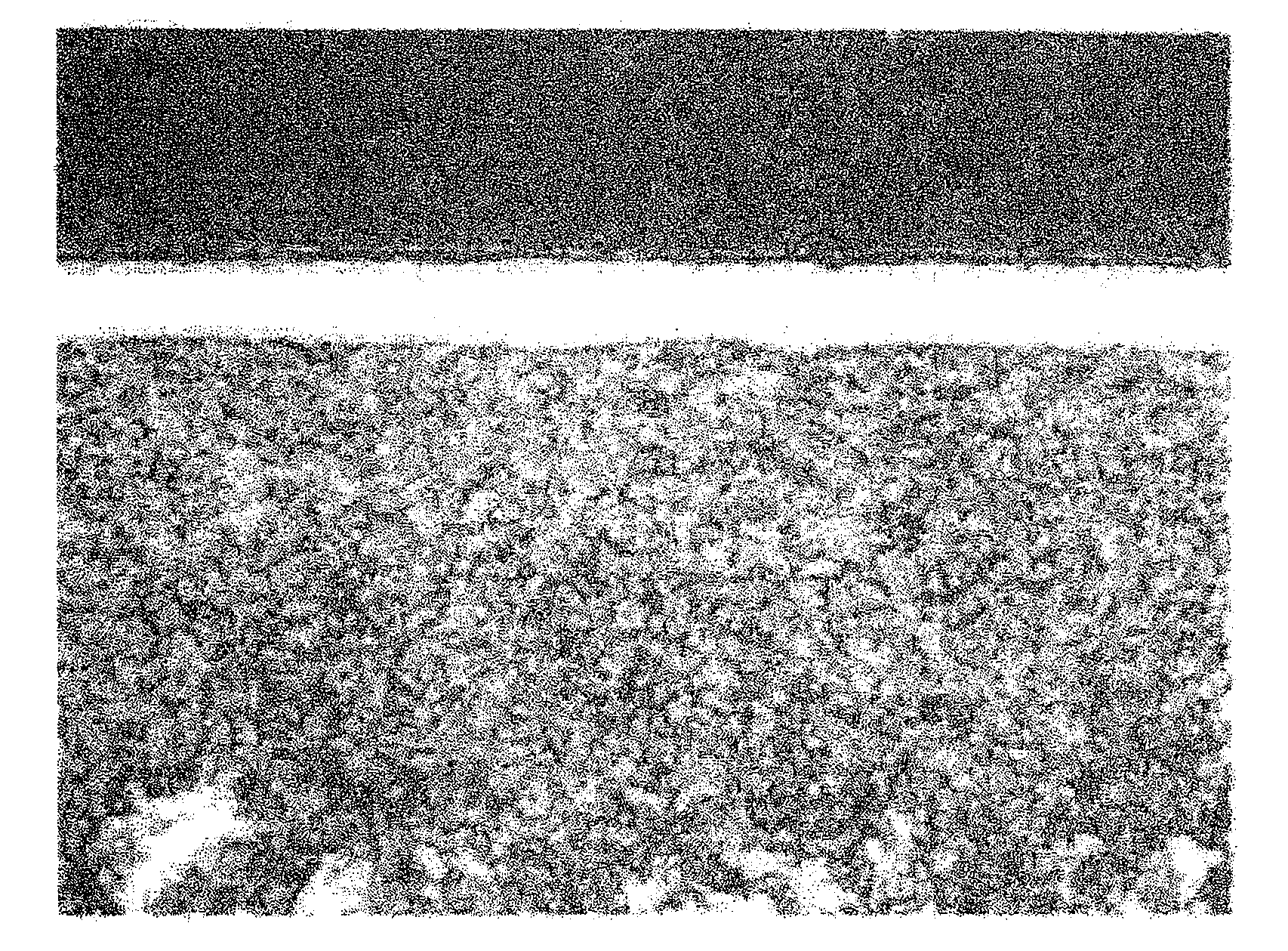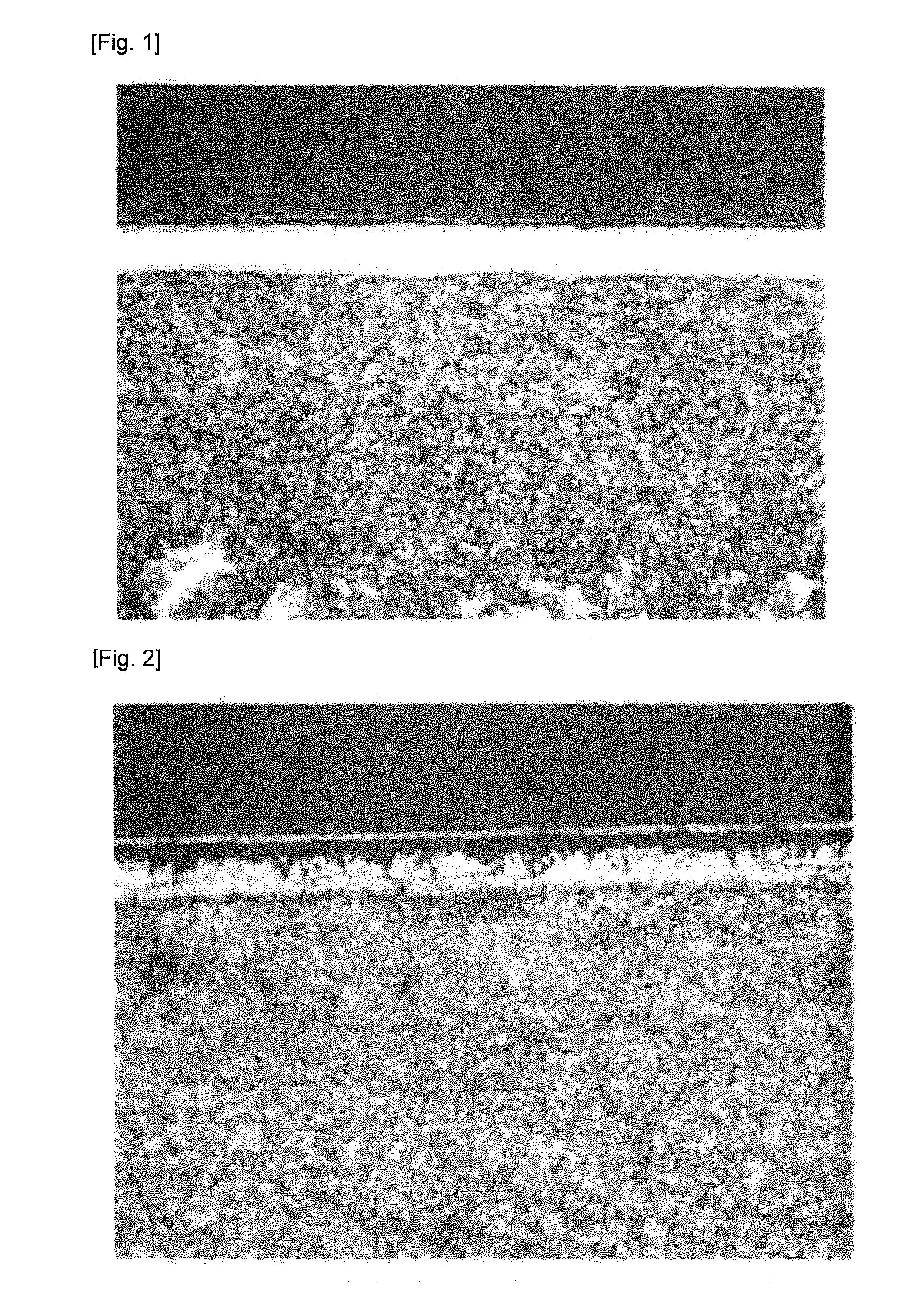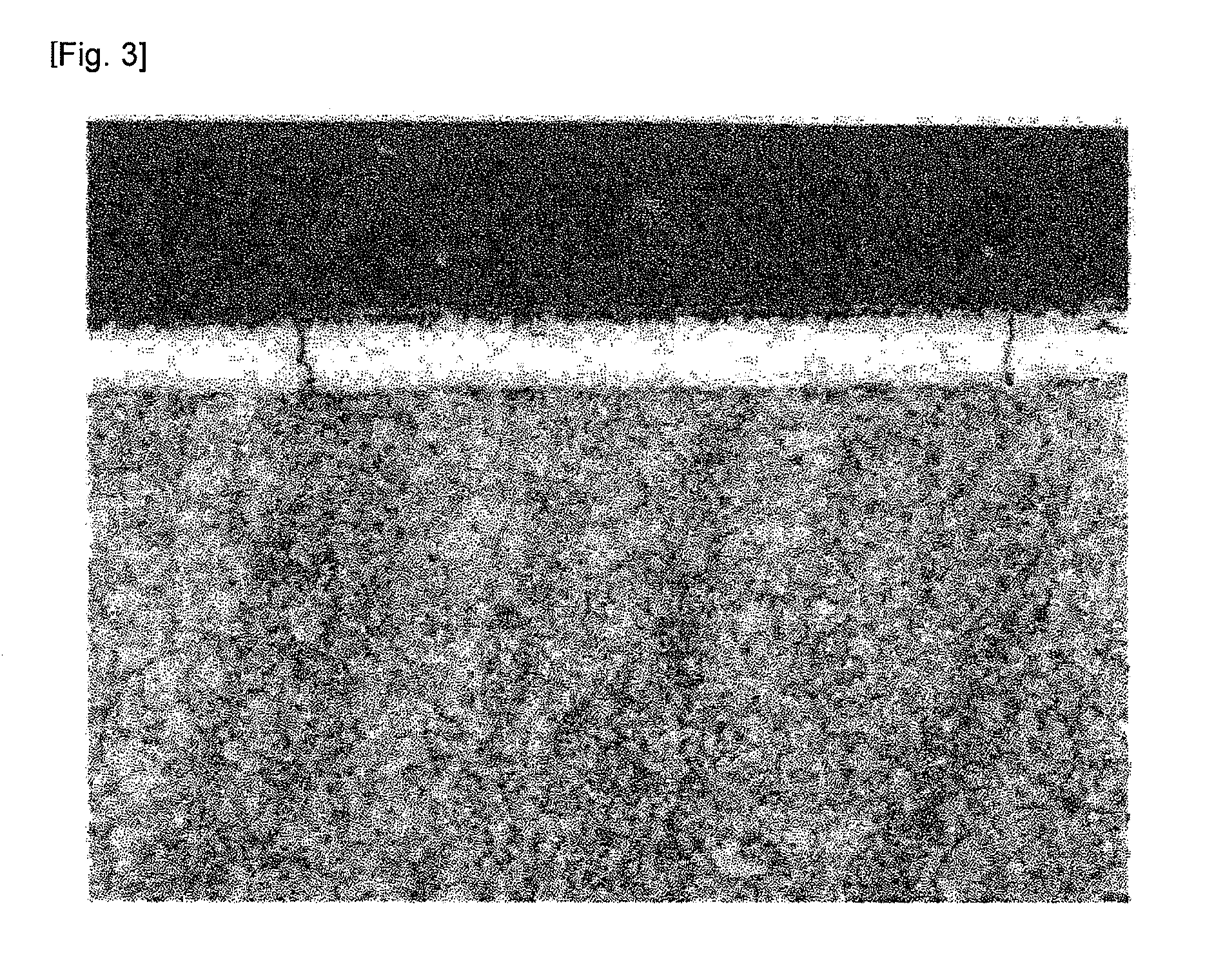Method for quenching of steel member, quenched steel member, and agent for protecting quenched surface
a technology of quenching agent and quenching method, which is applied in the direction of heat treatment apparatus, superimposed coating process, soldering apparatus, etc., can solve the problems of difficult to obtain the desired hardness of fine martensite, shallow hardened layer depth, and use of nitride layer (compound layer) formed by nitriding, etc., to achieve good sliding ability, prevent damage, and high hardness and/or mechanical strength
- Summary
- Abstract
- Description
- Claims
- Application Information
AI Technical Summary
Benefits of technology
Problems solved by technology
Method used
Image
Examples
example 1
[0033]An SCM 440 tempered material 8 mm in diameter and 12 mm in length was used as a substrate, whose surface was degreased, and was then nitrocarburized in a fused salt bath at 570° C. for two hours (Isonite treatment: Nihon Parkerizing Co., Ltd.) and oil cooled to form a compound layer comprising iron nitride 12 μm in thickness over the surface of the steel material.
[0034]To the steel material having the iron nitride layer formed over the surface, a neutral dispersed sol of 4% titanium oxide in water (Paltitan 5603: anatase+amorphous sol, Nihon Parkerizing Co., Ltd.) was also dip coated, removing excess liquid, and was then dried at 180° C. Ti deposit as measured using a fluorescent X-ray analyzer was 150 mg / m2.
[0035]The steel material having the iron nitride layer formed on which the inorganic compound layer containing titanium oxide was formed in this manner was also heated at a rate of 150° C. / sec using an induction quenching device and applied with a high frequency wave at 85...
example 2
[0036]A tempered material (SCM 440) 20 mm in diameter and 40 mm in length was used as a substrate, whose surface was degreased, and was then nitrocarburized in a fused salt bath at 570° C. for two hours (Isonite treatment: Nihon Parkerizing Co., Ltd.) to form a compound layer comprising iron nitride 10 μm in thickness over the surface of the steel material.
[0037]To the steel material having the iron nitride layer formed over the surface in this manner, a coating solution containing 8% ammonium zirconium carbonate (Daiichi Kigenso Kagaku Kogyo Co., Ltd.) and yttrium oxide was also brush coated and was then dried at 150° C. Deposits of Zr and Y as measured using a fluorescent X-ray analyzer were 850 mg / m2 and 50 mg / m2 respectively.
[0038]The steel material having the iron nitride layer formed on which the inorganic compound layer comprising oxides containing zirconium and yttrium was formed in this manner was also applied with a high frequency wave at 800° C. for five seconds using the...
example 3
[0039]An SCM 440 tempered material 8 mm in diameter and 12 mm in length was used as a substrate, whose surface was degreased, and was then nitrocarburized in a fused salt bath at 570° C. for two hours (Isonite treatment: Nihon Parkerizing Co., Ltd.) to form an iron nitride layer 12 μm in thickness over the surface of the steel material.
[0040]To the steel material having the iron nitride layer formed over the surface in this manner, a sol of 100 alumina (Aluminasol 200, Nissan Chemical Industries, Ltd.) was brush coated and was then dried. Al deposit as measured using a fluorescent X-ray analyzer was 1300 mg / m2.
[0041]The steel material having the iron nitride layer formed on which the inorganic compound layer containing aluminum oxide was formed in this manner was also applied with a high frequency wave at 850° C. for three seconds using the same induction quenching device of Example 1, immediately followed by water cooling for quenching.
PUM
| Property | Measurement | Unit |
|---|---|---|
| temperature | aaaaa | aaaaa |
| temperature | aaaaa | aaaaa |
| temperature | aaaaa | aaaaa |
Abstract
Description
Claims
Application Information
 Login to View More
Login to View More - R&D
- Intellectual Property
- Life Sciences
- Materials
- Tech Scout
- Unparalleled Data Quality
- Higher Quality Content
- 60% Fewer Hallucinations
Browse by: Latest US Patents, China's latest patents, Technical Efficacy Thesaurus, Application Domain, Technology Topic, Popular Technical Reports.
© 2025 PatSnap. All rights reserved.Legal|Privacy policy|Modern Slavery Act Transparency Statement|Sitemap|About US| Contact US: help@patsnap.com



